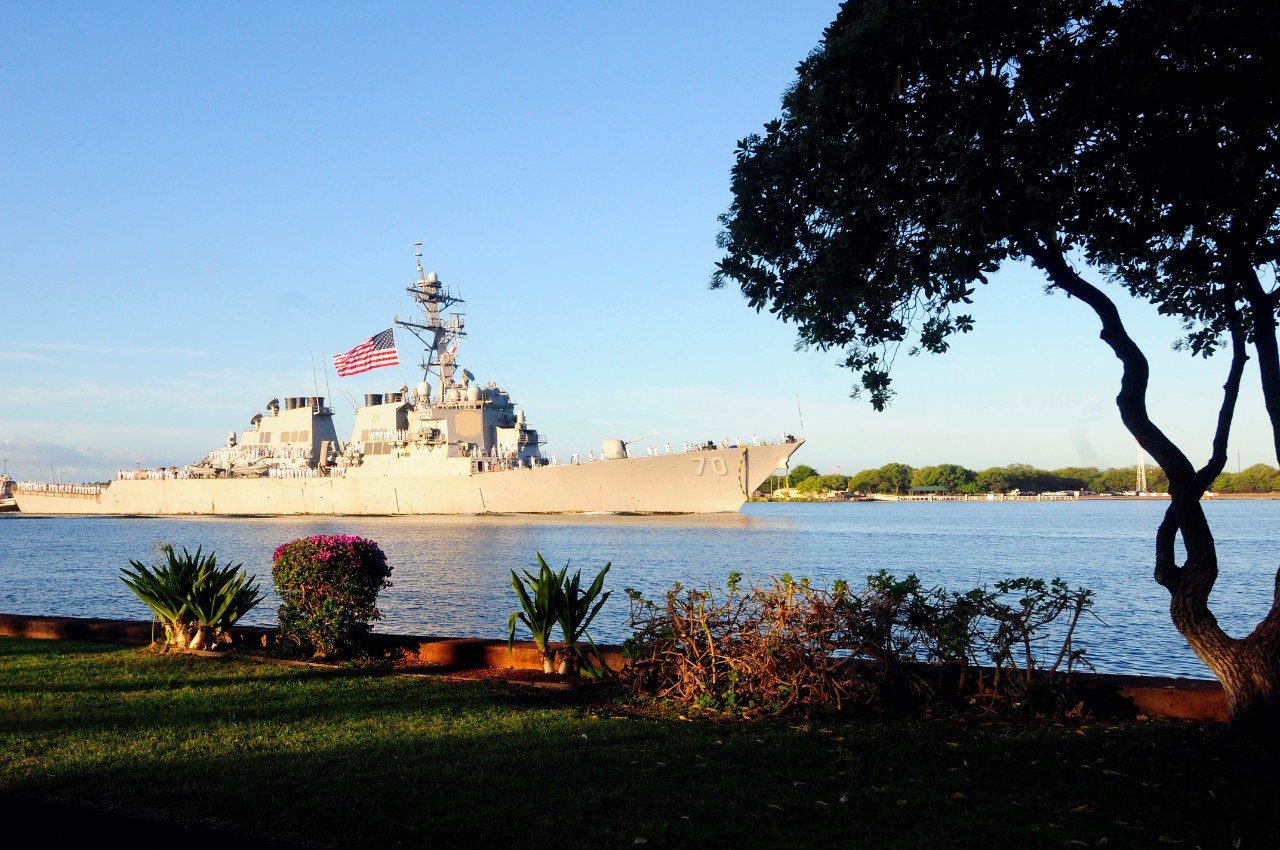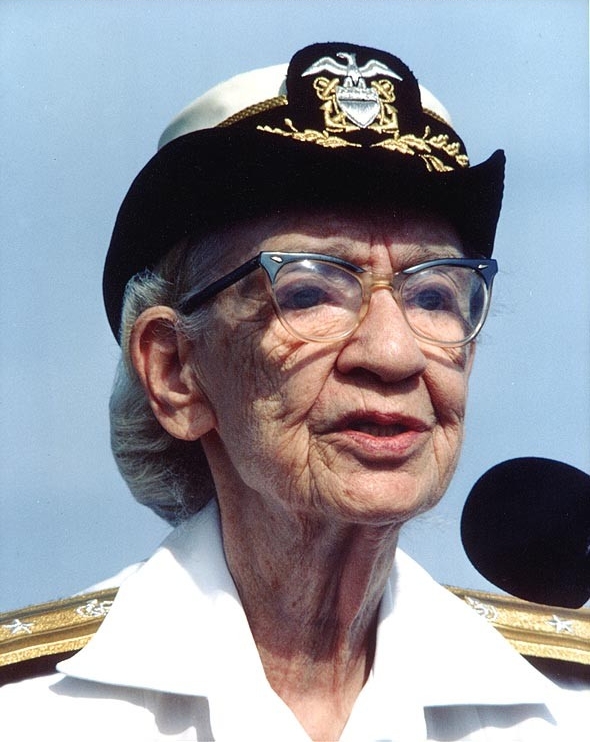Rear Admiral Grace Hopper

The guided-missile destroyer USS Hopper (DDG-70) returned to Joint Base Pearl Harbor-Hickam from a seven-month independent deployment, 14 November 2011. Hopper conducted ballistic missile defense operations, as well as maritime interdiction operations and theater security cooperation. (U.S. Navy photo by Mass Communication Specialist Seaman Dustin W. Sisco)
Guided-missile destroyer USS Hopper (DDG-70) proudly bears the name of Rear Admiral Grace Murray Hopper, who was a pioneer in the field of computer science.
Hopper was born on 9 December 1906 in New York City. She graduated from Vassar College in 1928, earned her master’s degree in 1930 from Yale University, and PhD in 1934. In December 1943, she entered the U.S. Naval Reserve and attended the USNR Midshipman’s School-W at Northampton, Massachusetts. Upon graduation, Hopper was commissioned a lieutenant (j.g.) and was ordered to the Bureau of Ordnance Computation Project at Harvard University. There she learned to program the first large-scale digital computer, Mark I. In 1946, she resigned from Vassar and joined the Harvard faculty as a research fellow in Engineering Sciences and Applied Physics at the Computation Laboratory where work continued on the Mark I and Mark II for the Navy.

Grace M. Hopper. Naval History and Heritage Command photograph. Catalog#: NH 96920-KN
In 1949, Hopper joined the Eckert-Mauchly Computer Corporation in Philadelphia as a senior mathematician, building the UNIVAC I, the first commercial large-scale electronic computer. She remained with the company as a senior programmer when it was bought by Remington Rand and later merged into the Sperry Corporation. In 1952, she was appointed systems engineer, director for automatic programming, when she published the first paper on compilers. In December 1971, Hopper retired from the UNIVAC Division of the Sperry Rand Corporation.
Over the course of her career, Hopper published more than fifty papers and articles on software and programing languages. Her interest in applications programming sent her to the first meeting of CODASYL (committee on data systems languages) with a strong interest in the development of COBOL (common business oriented language). She also served on the American National Standard Institute’s (ANSI) Xe.4 committee on the standardization of computer languages.
Hopper received numerous awards and held many distinguished positions during her lifetime. She was elected fellow of the Institute of Electrical and Electronic Engineers in 1962, named the first computer science “Man of the Year” by the Data Processing Management Association in 1969, and was awarded the National Medal of Technology in 1991. She retired from the Navy in 1986 at the age of 79. She was the oldest officer on active U.S. naval duty when she retired. She passed away on 1 January 1992. Hopper is buried at Arlington National Cemetery. She received the Presidential Medal of Freedom posthumously in 2016.
*****
Source
Naval History and Heritage Command: Grace Murray Hopper. https://www.history.navy.mil/research/library/research-guides/modern-biographical-files-ndl/modern-bios-h/hopper-grace-murray-text.html Retrieved 9 March 2020.
USS Hopper (DDG-70)
- The first U.S. Navy ship named to honor Grace Murray Hopper
- Laid down: 23 February 1995 at Bath, Maine, by Bath Iron Works
- Launched: 6 January 1996
- Commissioned: 6 September 1997
- Sponsor: Mary M. Westcote, sister of the late Rear Admiral Hopper
Additional Resources


